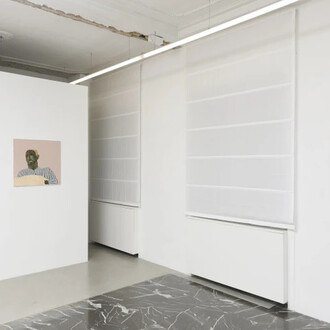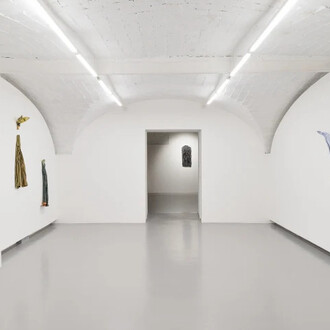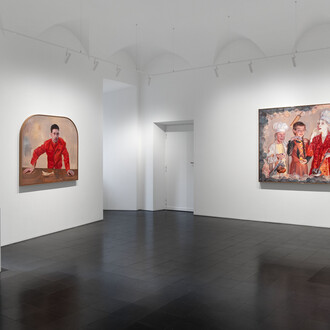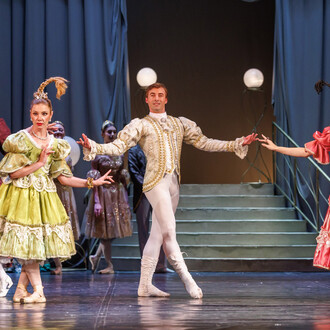Hosted in Rome, this one-of-a-kind exhibition celebrates the perfect marriage between nutrition, the key theme of EXPO 2015 in Milan, and Made in Italy creativity. “L’eleganza del cibo. Tales about food and fashion” (‘The elegance of food. Tales about food and fashion’) is open from 18th May 2015 at the Mercati di Traiano Museo dei Fori Imperiali in Rome. An archaeological site of rare beauty, renowned for its history and architectural elegance, chosen to enlighten visitors about the crossover between the cultures of fashion and nutrition, two of the most widely appreciated and famed aspects of Italy’s heritage. Water, Air, Earth and Fire. These four natural elements will be the leitmotif of the exhibition, serving as an integral part of the events scheduled to be held in Rome and Milan from May to October during Expo 2015.
The exhibition, curated by Stefano Dominella and Bonizza Giordani Aragno, explores the most relevant and widely accepted aspects of fashion, from fabrics, to embroidery and accessories. The leitmotif is food with a particular emphasis on nature. Fashion dresses, beautifies, exalts and protects the body. It is its outer aspect! Food passes through it, nourishing and replenishing it. Thus, ostensibly, their end goals appear to be incompatible. Fashion feeds the body. Food nourishes the mind.
Various sections, devoted to projects inspired by the correlation between food and nutrition, fashion and eco-sustainability and fashion and energy, will be set up in the rooms of the museum. Food and nature’s ingredients will be the key theme of the exhibition at which the fashion trends of yesterday, today and tomorrow will take centre stage. Dresses, accessories, photographic images and videos, holograms, video mappings and visual art will be used to create a contemporary creative display where Made-in-Italy, superior craftsmanship and, as a result, the tradition of all things ‘beautiful and well made’ will serve as proof of how and to what extent fashion has drawn inspiration from food. The display space will also be enhanced by the photographs of Korean artist Yeonju Sung, a dream-like journey in 8 images showing how food can dialogue with clothing and assume its shapes. Dresses/works of art but also accessories created with unusual materials, boasting shapes and designs inspired by innovative, original and ironic research. Because, it is, in fact, irony that inspires the creativity of designers when interpreting food. The outfits created by several of the best-known couturiers, from the 1950s to-date, together with creations by young emerging designers and young talents will be featured at the exhibition, the aim being to highlight its contents and clarify the inspiration on which the entire concept of the exhibition is based. Fashion, with its protagonists, will take visitors on a fascinating, one-of-a-kind journey in perfect keeping with the key theme of Expo 2015, where the fusion of ‘tastes’ will take centre stage.
If one plays a ‘game’ by substituting the word fashion with food, one begins to understand how and why these two pillars of creativity and Italian culture inevitably meet, resulting in a significant strengthening of their bond.
Among the 160 creations on exhibit, including accessories and outfits, worthy of particular note Giorgio Armani that has exceptionally joined the initiative. Re Giorgio, in his latest collection Privé, is inspired by bamboo , delicate plant and robust at the same time , more and more popular in the industry sustainable, metaphor of elegance that elevates poetry in fabric and design . Etro who coined the phrase “We are what we eat”, thus the beautiful prints of the Maison are highlighted by pasta and raw seafood, in graphic compositions created using digital images in which royal meals, typically Italian in terms of representation, are transformed into a kaleidoscope of food. Since the very beginning, Agatha Ruiz de la Prada, has amazed us with decorations reminiscent of food, all decidedly ironic and whimsical, to add a touch of fun to everyday fashion. Gattinoni has dedicated an entire haute couture collection to food. On exhibit at the museum, visitors can admire his “bread dress” featuring a bustier sculpted with real ears of corn and jute trousers embroidered with iced, glazed biscuits and salted crackers. Young designer Tiziano Guardini has chosen real licorice roots to create his eco-sustainable “Natural Couture” dress. Salvatore Ferragamo, a pioneer in the use of ‘poor’ materials such as cork, raffia and hemp, has chosen to exhibit several of his most famous pieces of footwear taken from the historic archives of the foundation dedicated to him. Antonio Marras, whose creative roots lie in his native Sardinia, showcases dresses featuring embroidery reminiscent of nature. True to form, ubiquitous designer Moschino treats food with irony, using it as a tool centred on social issues. Fashion gardener Ken Scott, one of the first designers to pay tribute to food through vibrant prints splashed across his apparel, also comes to the party: asparagus, peas, artichokes and apples become a ‘marvelous wearable orchard’. At the Mercati di Traiano, Laura Biagiotti’s ‘florilegio’ takes centre stage with dresses that speak to us of fabrics inspired by nature.
“Over these past few years, I have often asked myself about the paroxysm that is currently grabbing everyone’s attention ”, commented Stefano Dominella, the curator of the exhibition. “On the one hand, hedonism, body care, being thin and fit at all costs and, on the other, the vast and seemingly endless media and advertising coverage given to food, taste and gourmet delights in general which triggers food anxiety. So what about fashion? Since time immemorial, it has collected and absorbed all of these exhortations, interpreting them with ironic creativity. It was based on this ‘Dolce Vita’-type approach to food that I came up with the idea of an exhibition involving the mixing of fashion and food. Not only a fun way of interpreting this ‘strange couple’ but also a means of gaining deeper insight and arousing awareness about the thousands of nuances associated with it, not least, respect for nature and the environment.”



















